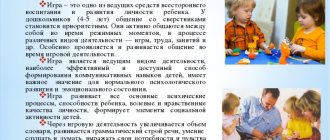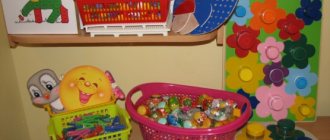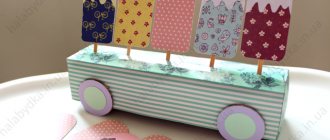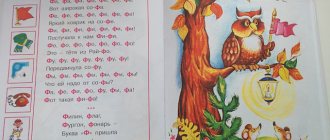Knowledge of English gives a great advantage, opening up a lot of opportunities for a person. Therefore, it is not surprising that many parents of preschool children are concerned about this issue, and, not hoping for a comprehensive school, enroll their children in courses to study it. What are such activities for kids - entertainment or creating a good foundation for the future?
At what age should you start studying?
The examples of Mowgli children available in history convincingly illustrate that you can teach a person to talk only in childhood; later this is no longer possible. In the case of learning a foreign language, the situation is similar: the earlier a child starts learning it, the better it is learned - that’s what scientists say. On the other hand, many parents and teachers are confident that there is no point in spending time and money on teaching English to preschoolers, since at middle or high school age children are able to master the material in 1-3 months to the extent that children spend a whole year on .
An analysis of the characteristics of foreign language acquisition by children and adults in the context of the following categories will help weigh the pros and cons.
- Phonetics and pronunciation. Thanks to the excellent ability to imitate, which remains in children after they have completely mastered the phonetic system of their native language, preschoolers can easily imitate unusual foreign sounds. An adult, unless he has extraordinary abilities, will not be able to reproduce many sounds correctly if the phonetic base was not laid in childhood.
- Grammar. This section of a foreign language is mastered through targeted study, and therefore is accessible only to children of middle school age and older. Preschoolers can only mechanically memorize and repeat individual phrases.
- Reading. The ability to read even short texts in a foreign language implies at least basic knowledge of the rules of grammar. Kids can only read individual words or memorized songs and poems.
- Lexicon. Here the advantage is also in favor of the older age, since the number of new words increases as various topics are studied, and for preschoolers their number is limited.
It turns out that the main advantage of English language courses for preschool children is creating the basis for good pronunciation. If a child attends classes 2 times a week, at best he will get a rough introduction to the subject and master the sound system. Another thing is the parallel study of two languages, as happens in bilingual families. In this case, both languages are involuntarily acquired by the child as native languages at a conversational level, and reading and writing develop later.
English for children aged 3-4 years
This age is the most optimal if you decide to start learning English with your child from the cradle. During this period, children turn into active “why-whys” and they are interested in almost everything around them. At the same time, kids think in bright and simple images, which help them remember new information easily and quickly. Therefore, foreign language lessons for children aged 2.5 - 4 years old will certainly bear fruit. But it is very important to choose the right format for English classes for kids.
Where to begin
Little children are carefree and spontaneous, so there is no need to meticulously explain to them the rules of the language. English lessons for children should be held exclusively in a playful way: your child should not feel any moralizing, coercion or demands. With a forceful approach, you will not only teach your child nothing, but also, on the contrary, you will form a hateful attitude towards any foreign languages. Therefore, be very careful: it is better to have spontaneous lessons for 10-15 minutes in the form of a game than 30-minute lessons in the full sense of the word.
If we talk about where to start the process of learning English with children, then there are many options. Among them:
- Alphabet;
- Greeting phrases;
- Designations of family members;
- Numbers, colors, etc.
But again, don't expect strict and consistent training like adults. Try to offer topics that interest your child, for example, learning words about animals or colors in English together. Say a word, and let the baby repeat after you, or, for example, show a card with such a picture.
In general, the presentation of material should be very dynamic and varied. Don’t make your child get bored, let alone tired of long explanations. Try to use fun and playful methods to teach English to young children. We have listed some of them below.
Songs
Educational songs are one of the best ways to teach English to young children. Fun music quickly attracts children's attention and activates auditory memory. This is how the kids have fun and at the same time remember English vocabulary easily and quickly.
It is also very effective to include videos with songs for kids. A bright video illustrating the plot of the song will further attract attention and help engage visual memory in the work. And after a couple of training sessions, move on to performing songs on your own with your child. You can also add fun dancing or play with the images of objects/animals that are discussed in the song.
In general, such entertaining lessons will develop the following skills in children:
- Interest in learning foreign languages;
- Knowledge of English words;
- Ability to recognize English by ear;
- Ability to speak independently (repeating memorized phrases).
And, of course, the children’s memory functioning and general development of intelligence will improve.
Fairy tales
Another effective method with which you can effectively teach English to children under 7 years old. What child doesn’t love to hear about the adventures of fairy-tale characters, especially when mom or dad talk about them.
Read fairy tales to your child as you always do, only now slowly add elements of the English language to them. First, one or two words that are familiar to the child, and later try to study with adapted versions of English fairy tales. Be sure to read the texts playfully: with changing your voice, showing scenes, gestures, etc. The brighter the images, the more interesting it is for children.
Games
And the children’s favorite pastime is outdoor games, fun and logical guessing games. All these elements also need to be actively used when teaching English to children.
The simplest thing is to tell your child English words using educational cards. You show the card and the child names it (or vice versa). Another fun game: the parent portrays a fairy-tale character, animal, bird or object, and the child must name the hidden character in English. You can also just walk outside and name the colors of surrounding objects.
There are many options, the only thing I would like to note is that we would not recommend accustoming your child to electronic games at this age. Do not leave children's education to computers, tablets and other gadgets. Only by your own positive example and participation can you impart the best knowledge and skills into your child.
Recommendations for conducting classes and games
Despite the limited capabilities of preschoolers in mastering a foreign language, many teachers note that children who studied English at an early age master it more easily and successfully as part of the school curriculum. Not the least role in this is played by the positive attitude towards classes, formed in children thanks to the playful form of learning to which they are accustomed. Games in English lessons are also good because they can be not only educational, but also developmental.
Games with cards
Visual-figurative thinking, characteristic of children, makes cards with English letters, words, actions and objects written on them one of the most popular learning tools at all its stages. Here are just a few examples.
- “Name the picture.” This game is good for beginners: the teacher shows the children a card and names the animal drawn on it, for example a cat, and then passes it to one of the students. The guys take turns repeating the word “cat”, passing the picture to each other. This exercise allows all participants to practice pronunciation, and also creates a “success situation”, which psychologists consider very important for increasing motivation to learn. Over time, this game can become more difficult. For example, children can say not just “cat”, but “this is a cat” - the complexity of pronunciation increases, and the simplest grammatical structure appears.
- “Describe the picture.” At the next stage, you can give the task to each of the participants to add some suitable description to the word: “little cat”, “black cat”, “lazy cat” - of course, after studying the corresponding words.
- "What's missing?" You need to pin several cards on the board and ask the children to memorize them, and then have them close their eyes for a while. The presenter removes 1-2 pictures, after which the students remember and name the disappeared images. This game develops memory and attention.
Poems and songs
One of the best helpers in working with preschoolers is music. Children associate it with fun and strengthen their sympathy for the subject being studied. Simple poems and songs are easy to remember, help expand vocabulary and create a feeling of quick results: while reciting a rhyme, the child seems to already be speaking English, and this is much more interesting than simply repeating words or the alphabet. It motivates. In addition, poems often contain useful information: for example, about the seasons, days of the week, colors of the rainbow, numbers. There are songs with names of body parts or some physical actions - their performance must be accompanied by appropriate movements.
Cartoons and educational videos
A lesson in a group of preschoolers involves alternating several types of activities, since children cannot concentrate on any one task for more than 10-15 minutes. When inventing various games for them, one should not neglect the achievements of technological progress: educational cartoons in English will not only delight little students, but will also allow them to consolidate authentic sounds in their memory, learn new words and mechanically remember the rules for using grammatical structures, the essence of which they will comprehend through several years at school. After watching the video, it will be useful to arrange a short scene based on it, using the phrases and words heard in it.
Guessing Games
Asking questions and drawing logical conclusions from the answers is a useful exercise for children, even if it is done in their native language. During English classes, memory work is also connected to logical mental operations. You can guess animals, people, vegetables, fruits - all within the framework of the material covered.
In the game you can use not only different groups of objects, but also different grammatical entities.
- Third person - one of the players thinks of a vegetable, and the rest ask him questions: “is it red?”, “is it round?”, “is it a tomato?” When the item is guessed, the presenter gives an affirmative answer: “Yes, it is a tomato.”
- Second and first persons: “Are you a tomato?” - “Yes, I am a tomato.”
This way, children automatically learn grammatical patterns, which helps develop their ability to speak English rather than just memorizing individual words.
How to teach English to preschoolers - 6 basic rules
The demand for “my child is 3 years old, needs to learn English” is growing. For many teachers, accustomed to preparing for exams or clearing away school rubble, this is unusual.
We tell you how a teacher can teach children English and work correctly with this age group.
Take into account age characteristics
Children 3-6 years old are mainly auditory learners. They perfectly repeat and remember information by ear. Take this into account.
Group (or individual) repetition is everything. Any structures are laid this way. Children will never remember that he - is, I - am at the rule level, but after repeating the correct examples several times, they will quickly get used to automatically putting the required form.
Carefully! If you tell them only the construction I am/ she is for a month, the transition to I like/ I run will be very painful. Therefore, drill several structures at the same time.
In addition to auditory perception, children are very receptive to tactile information. That's why TPR is just for them. If you are teaching colors, introduce activities where the child has to point or touch a color; go over prepositions of place - ask them to reproduce the meaning of the preposition (for example, stand behind), etc.
Be gradual and consistent
You can’t just take it and start doing a new activity. For example, reading words. First, try to talk and show more, and ask the children to repeat.
Then add the spelling of the word. Flash cards with signatures on the back are great for this. We gradually teach kids to look at the spelling of words - say the word and immediately point to the picture.
As an alternative, lay out the cards on the table and ask the children to touch the named picture, gradually turning them over with the inscriptions facing up. Excellent for preparing children for reading.
After this, you can move on to tracing letters and words. It is important to give children copybooks with arrows so that they do not write i from bottom to top.
Use heroes
Children are children. There is nothing better for them than introducing language through characters they like. Most foreign lines do this: Kid's Box, Show and Tell.
If the line you choose has puppets, make the most of them. Children simply love to act out dialogues, and a toy on their hand has a magical effect on them.
If you follow your program, just enter any soft toy as a character and use it in every lesson. Even a banal shaking of a paw will perfectly involve children in the process, but I think it’s not worth talking about how to demonstrate prepositions of place =)
Work according to a template
Children love predictability. Therefore, the lesson template should be approximately the same: greeting, warm-up, skit/video/work at the blackboard, game, work in the textbook, checking the work, farewell.
It’s easier for them, they quickly get used to it and learn without stress.
Provide a change in activity
Sitting still for an hour is an impossible task for children. They need to be regularly raised from their seats - jumping on cards, dancing to a video (Super Simple Songs), talking while standing. Otherwise, kids simply won’t be able to concentrate due to excess energy.
Be prepared for the unexpected
I'm talking about “children's surprises”, and “I want to go to the toilet” is nothing. But sudden children's tears can unsettle a teacher. Most often, children cry not because of you or English, but just because.
Don't worry and try to switch your child's attention to something else. At least on the wall - that can also work.
Also be prepared for the fact that many children may not yet be able to hold a pen - if you notice this, ask your parents (or school administration) to buy special triangular nozzles and other devices for learning to write.
The main task of the teacher is not to discourage preschoolers’ interest in the language.
A friendly atmosphere, a familiar work schedule and a lot of repetition out loud - that’s all! comments powered by HyperComments
General recommendations, literature
The variety of English lessons for kids is endless. Drawing and coloring, modeling, crafts, songs and dances, skits, active and role-playing games - all this can and should be organically included in classes. It is useful and fun for children to study in a group, but if you wish, it is easy to organize training for your child yourself at home. In this case, it is worth choosing a good textbook to rely on.
Experts recommend using textbooks by English-language authors, written entirely in English. Among them are guides for beginners - for example, the Activity Book for Children from Oxford, which contains several parts of a fascinating coloring book on which objects are labeled in a certain color. During the coloring process, the child will remember the names of the colors.
Picture Grammar for Children is another picture-based textbook. It is intended for children who have already passed the elementary level. Here, students are encouraged not only to memorize new words, but also to learn to write them, compose sentences from them, and answer questions. In an easy and unobtrusive form, the child will train oral speech skills, and this is exactly what is primarily meant by language proficiency. There are also excellent Russian-language textbooks and tutorials, for example, “English for Kids” edited by N. A. Bonk (authors I. A. Shishkova, M. E. Verbovskaya) . Equipped with interesting audio materials, it is perfect for working with children 4-6 years old.
The book “English for Children. Great tutorial" by Sergei Matveev . The information in it is presented clearly and in detail so that parents can easily work with their children on their own.
When deciding whether it is necessary to teach English to a child under 6-7 years old, it is worth considering that such classes will not only benefit him in preparation for school, but will also broaden his horizons and help him feel more confident in the company of his peers. You shouldn’t expect your child to speak English right away, but there is no doubt that the acquired knowledge will come in handy when learning the language at an older age.






